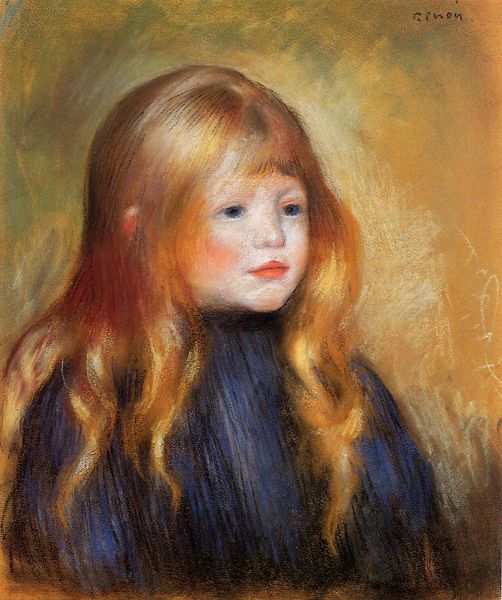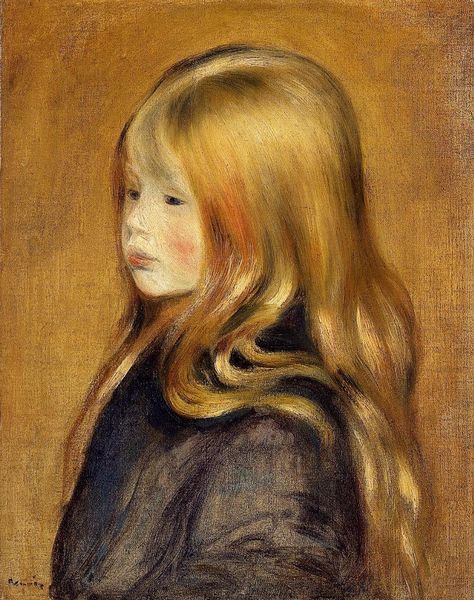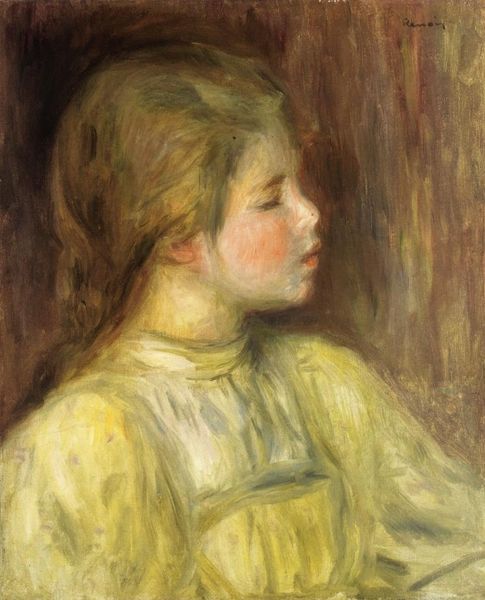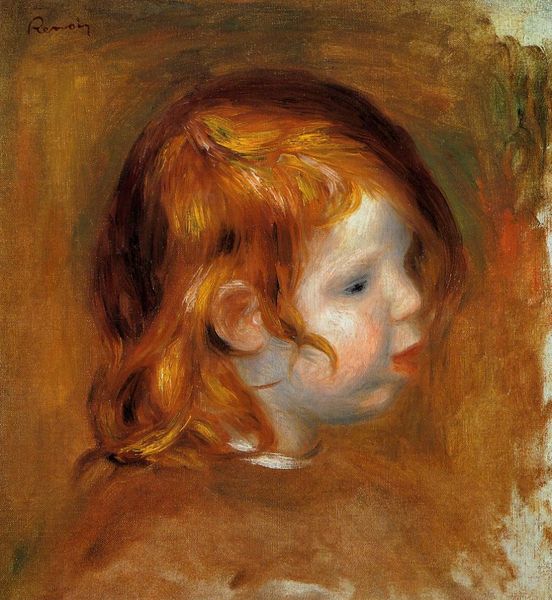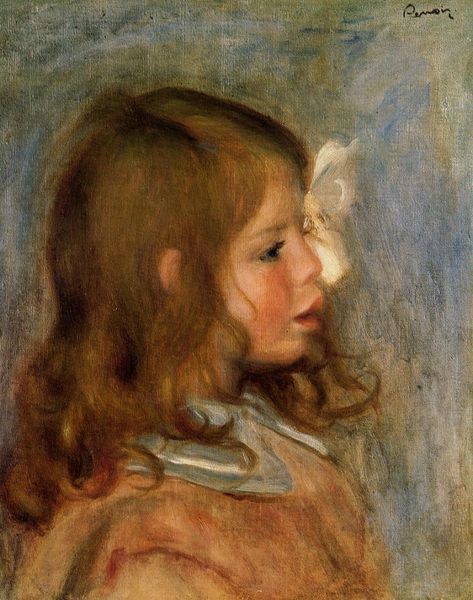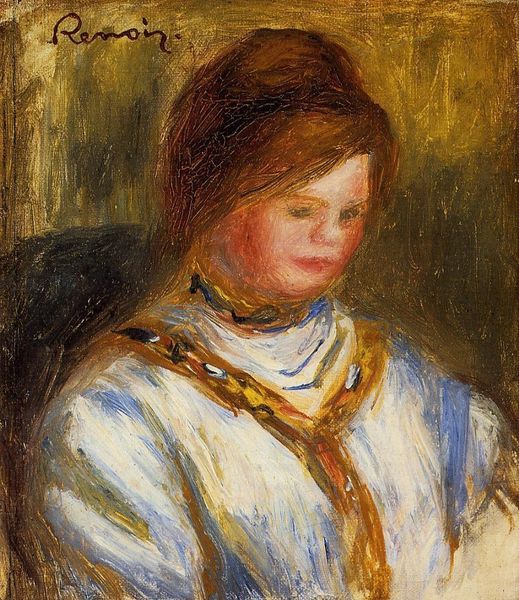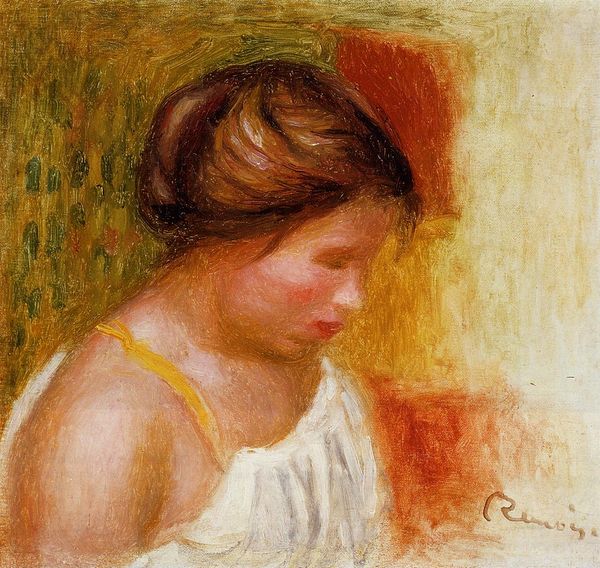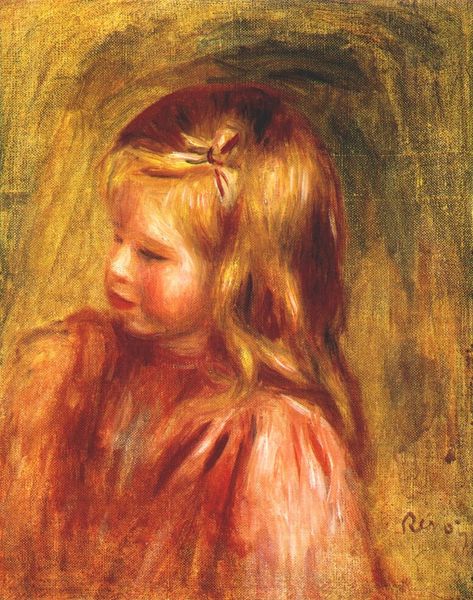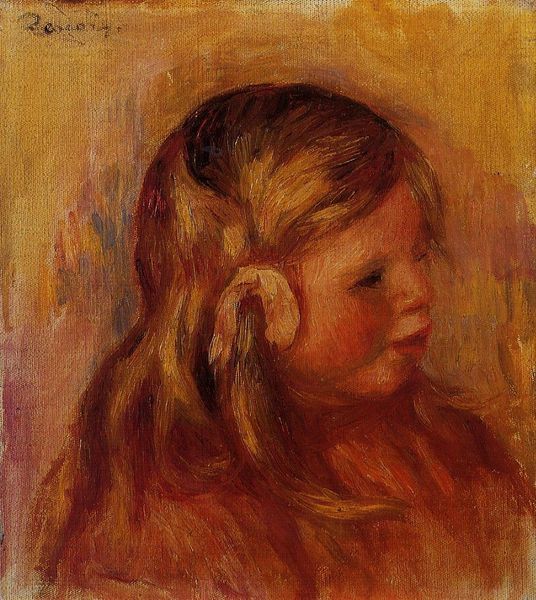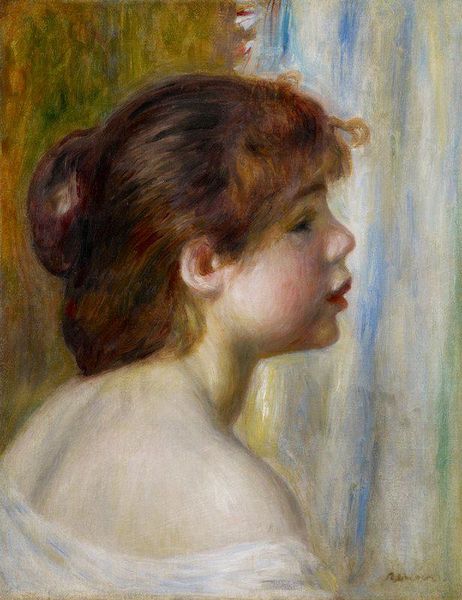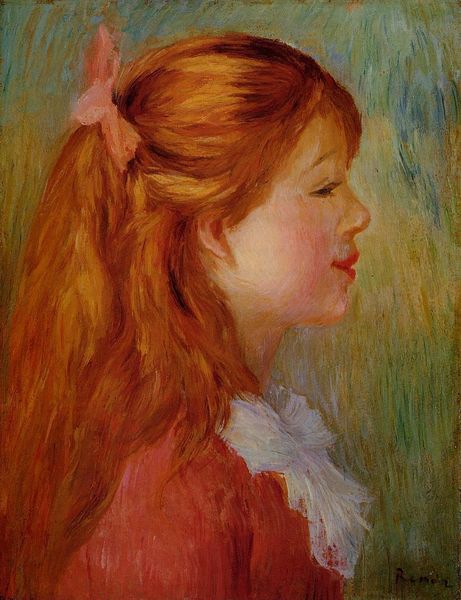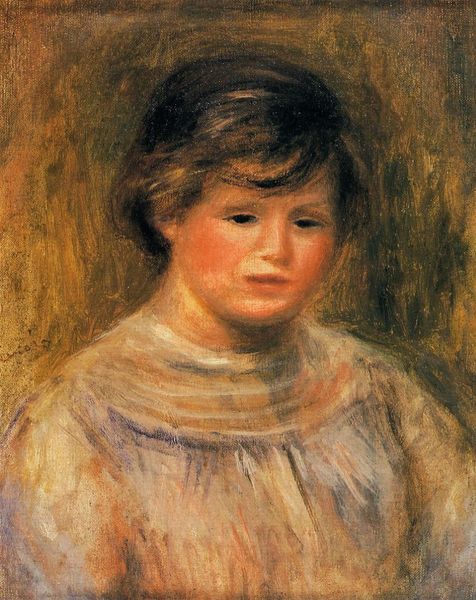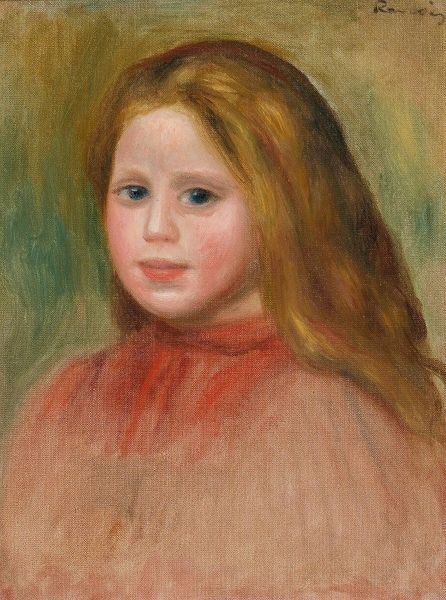
Copyright: Public domain
Curator: This is Renoir’s “Head of a Little Girl in Profile,” an oil painting from 1901, part of a private collection. Editor: She seems utterly lost in thought, doesn't she? There's a quiet dignity in the pose. Almost a premonition of adulthood in the averted gaze. Curator: Absolutely. Renoir captures childhood through such specific symbolic codes. Note how the light softly caresses her face, but also how the loose brushwork almost dissolves the boundaries, suggesting transience. He used the face as a sign, if you will, pointing beyond the image. Editor: I see what you mean about the brushwork. It feels less like a portrait and more like an impression, a fleeting moment captured. Considering his era, isn’t there something almost stubbornly romantic about idealizing girlhood? Curator: Indeed. You are right about that romantic bent. Children, especially girls, function as symbols of innocence, purity—archetypes meant to inspire specific feelings in the viewer. He wasn't necessarily invested in the girls’ lived experiences. Editor: The muted colors, too, seem intentional. Browns and yellows predominantly, reflecting I think a specific cultural idea of beauty that often leaves out girls and women of color, erasing a richer tapestry. And in these historical paintings we seldom learn about working class children. Curator: Exactly. And this reinforces the idea of idealized beauty. The flowing hair is so emphasized, but really serves as an element of continuity within a tradition that rewards women and girls for passive aesthetic pleasure. Even if the style looks progressive at first, the underlying power structures remain mostly unaddressed. Editor: Still, I find a certain charm. It is hard to fully dismiss the tenderness with which he depicts her. I just wish it could have included the realities and experiences of all girls. Curator: It’s in private collection now. Considering our present context, I believe it asks us to reflect upon those very tensions. To recognize what remains powerful while interrogating who and what get left out of our historical images. Editor: Absolutely. Seeing those absent faces helps us build new art, hopefully grounded in inclusivity.
Comments
No comments
Be the first to comment and join the conversation on the ultimate creative platform.
